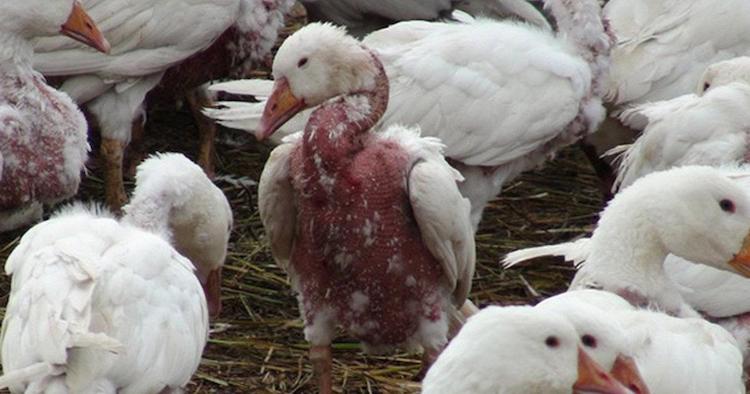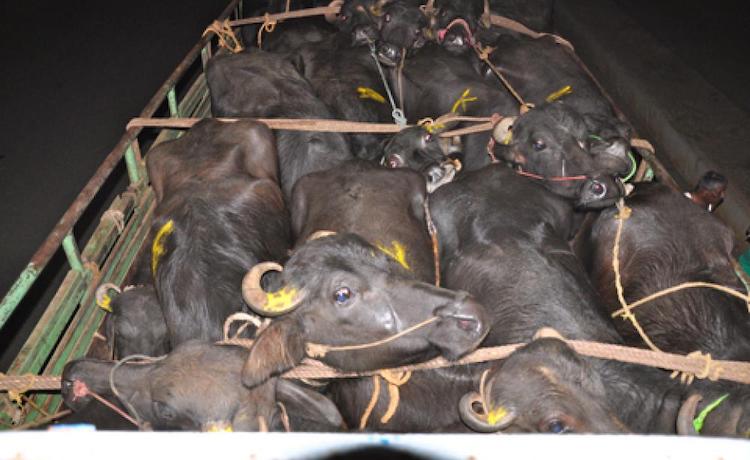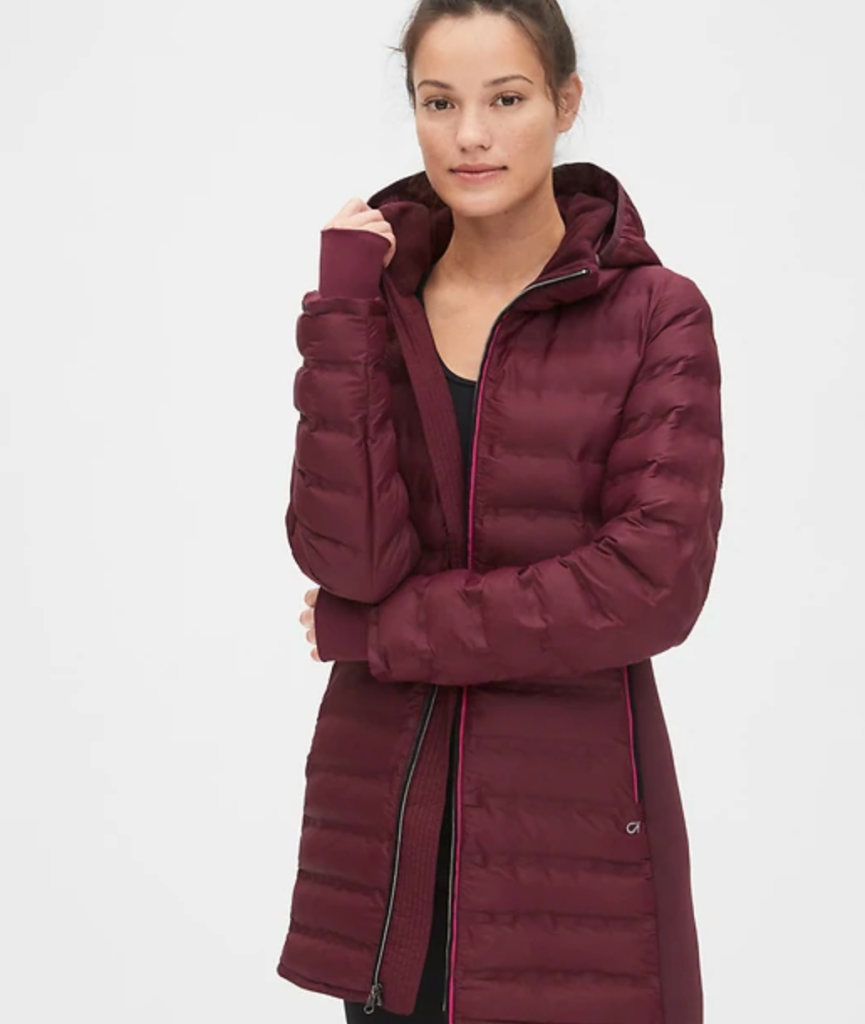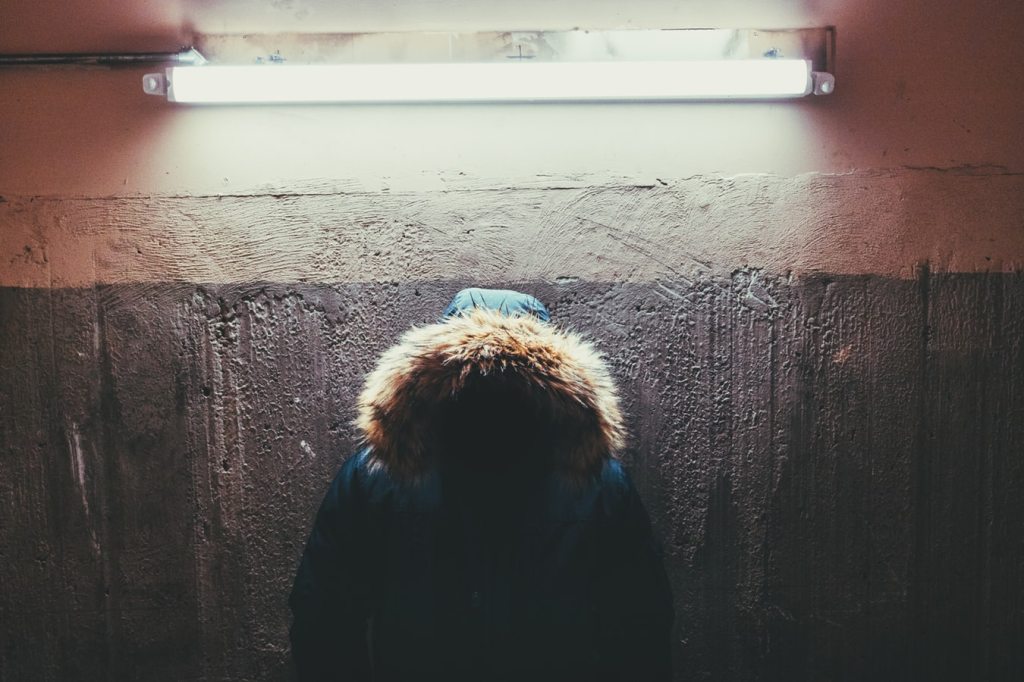As the weather starts to get colder, stores across the country will begin stocking their shelves and racks with cashmere, wool, down, angora, and fur. While these “fabrics” help stave off the bitter cold, it’s important for us to acknowledge that unlike cotton, they don’t grow on trees. In fact, they all come from animals – and they all come from cruelty.
The despicable animal abuse rampant in the fur industry is widely known – it’s why the California legislature just passed a law to ban the sale of fur throughout the state. But I think people rarely stop to question where things like down or cashmere or angora come from.
So, before you grab a new fall sweater or winter coat, take a look at the disturbing reality behind what it takes to make these materials.
Down

Contrary to popular belief, feathers used for down coats and comforters don’t just gently fall off geese. Sadly, undercover footage has revealed that these poor birds are “live-plucked.” That means these sensitive animals have their feathers literally ripped out of their bodies while they’re fully conscious. Imagine someone holding you down and violently pulling out all the hair on your head.
To make matters worse, in many cases down is a by-product of foie gras production – a practice so despicably cruel it’s been banned in several countries, as well as in California. So not only do these birds have to endure the agonizing pain of having their feathers ripped out, they also are force-fed three times a day by having a metal pipes shoved down their throats.
Wool

While most people assume that getting wool from sheep involves nothing more than an innocuous haircut, the reality is a very different story. Several animal protection organizations have documented the appalling and widespread cruelty in the wool industry.
In Australia, where nearly a quarter of the world’s wool is produced, animal activists have filmed sheep being mutilated, roughly handled, and having their coats violently shorn. This results in painful open wounds that are either left untreated or crudely sewn up without painkillers.
Additionally, when Australian sheep stop producing enough wool to be considered profitable to farmers, they are loaded up on massive ships headed to the Middle East where these exhausted and brutalized animals are slaughtered for meat. The conditions on these ships are so appalling they’ve inspired global protests that have resulted in the Australian government temporarily suspending the export during hotter months.
Stateside, undercover investigators have exposed sickening abuse to sheep exploited for wool on several farms across multiple states. One investigation at a Patagonia-approved wool supplier in Utah revealed pregnant sheep being whipped and roughly handled by workers. Video footage also showed sheep being held down and violently cut up.
Cashmere

Cashmere is made from the undercoat of cashmere goats. Almost all cashmere originates from either China or Mongolia. This past year, a shocking undercover investigation by animal activists exposed the cruelty involved in cashmere production. Goats were documented being held down and having their hair brutally torn out using sharp metal combs. Many goats were left with bloody wounds from the violent procedure.
Goats that are no longer considered profitable by the cashmere industry are sent to slaughter for cheap meat. It can take the hair of up to six goats to produce just one cashmere jacket.
Angora

Much like cashmere, angora is mainly produced in Asia and comes from the fur of angora rabbits. On angora farms, these poor, sensitive animals are forced to live in filthy cages barely bigger than the size of their own bodies. Every few months, they are grabbed out of their enclosures and stretched over a board so their fur can be violently ripped out while they’re fully conscious.
Because angora rabbits are prey animals, they are easily scared and prone to heart attacks. During an undercover investigation in China by PETA Asia, a farmer told the investigator that many rabbits die within one or two years of this terrifying ordeal. The rabbits who survive it, will eventually be sent to slaughter for meat.
Leather

Though many think that leather is just a by-product of the meat industry, the truth is that leather is the most important co-product of the meat industry. This means that by purchasing leather we’re also supporting cruel factory farms.
And while it’s common for leather to come from the skin of cows, leather is rarely, if ever, labeled for species origin. In reality, leather can be and is made from all sorts of animals including horses, camels, kangaroos, goats, and even dogs. Do you know whose skin you’re wearing?
Take a look at this video narrated by major fashion designer, Stella McCartney. It shows the horrors behind the leather industry and why we should stop buying it.
What Can We Do?
The sad fact is that whenever we commodify animals for food, clothing, entertainment, etc., it always leads to exploitation and cruelty. The best way to help put a stop to this is to vote with our dollars.
Thankfully, there are tons of options for fall/winter clothes that are not made from animal products. Vegan companies like Vaute Couture and Matt & Nat make stylish and warm winter coats, but even companies like Gap and Patagonia offer coats and jackets made from vegan recycled materials. These items are not only better for the environment and the animals, they actually perform better than wool or down in wet weather.

Puffer Coat by Gap 
Quilted Bomber by Patagonia
For sweaters, gloves, hats, scarves, etc. just look for things that are made from materials like Polartec, acrylic, cotton, and vegan leather. Trust me, there are tons of options that perform just as well as their animal-based counterparts and will keep you warm in the coldest months. Cruelty is never in fashion.
